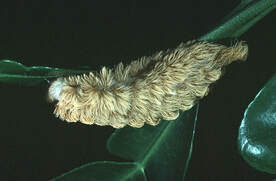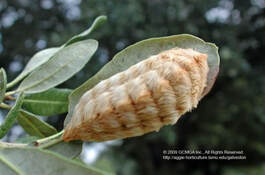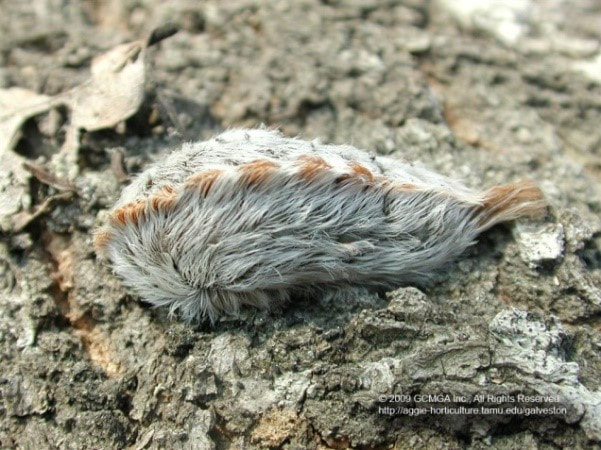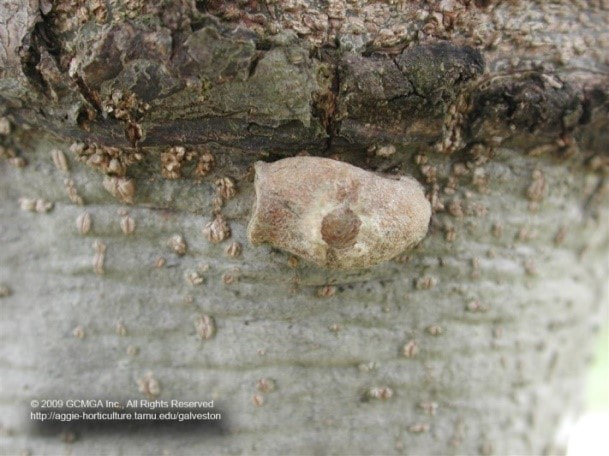|
Type Pest: chewing insect (Megalopyge opercularis J. E. Smith)
Type Metamorphous: complete (egg, larva, pupa, adult stages) Other Common Names: flannel moth, puss caterpillar Period of Primary Occurrence: late spring to late summer • Moths emerge in late spring to early summer to lay eggs • One or two generations can occur each year • Asp moth caterpillars are more commonly encountered in late summer and into the fall when they attain half to full size Plants Affected: Oaks, pecan, elm, hackberry, dwarf yaupon, and hollies Identifying Characteristics of Insect Pest • Adult moth approximately 1" long with blunt wings covered with long wavy hair; wings are orange at the base and cream-colored at the tips • Moths lay eggs that hatch into a dangerous larva (caterpillars about 1" long) with 7 pairs of prolegs (suction cup-like claspers on rear of the body) • Caterpillars are teardrop-shaped with long silky hairs, resembling a tuft of cotton or fur (Fig. 1-4) • Colors vary from yellow or gray to reddish-brown or a mixture of colors (Fig. 1-4) Description / Symptoms • Venomous hairs stick into the skin causing painful burning and a rash • Other symptoms include headaches, nausea, vomiting, shock or respiratory stress • Pain usually subsides within an hour and spots disappear within a few days • Infests shade trees and shrubbery around homes, schools and in parks, but cause no serious damage to the plant; infestation not limited to vegetation, can be found on hard surfaces near trees and shrubs; hazard is to children and gardeners who encounter them or others who brush up against them • One of the most toxic caterpillars in North America • Intense throbbing pain develops immediately or within five minutes of contact with the caterpillar • Blood colored spots in a grid pattern and swelling may occur at site of sting • Severe sting happens when the asp moth caterpillar rubs or is pressed against skin First-aid for Stings • Ice pack applied to site of sting • Oral antihistamines, for allergic reactions such as itching and for difficulty breathing, see a physician immediately Best Management Practices (BMP) • High populations of asp caterpillars can be controlled by spraying with a residual pesticide such as permethrin, cyfluthrin or other sprays labeled for control of caterpillars on ornamental plants |
BEWARE OF THE ASP OR PUSS CATERPILLAR
(Prepared by Camille Goodwin, MG 2008 Texas AgriLife Extension Service Galveston County Office Dickinson, TX 77539) posted at www.aggie-horticuluture.tamu.edu)



